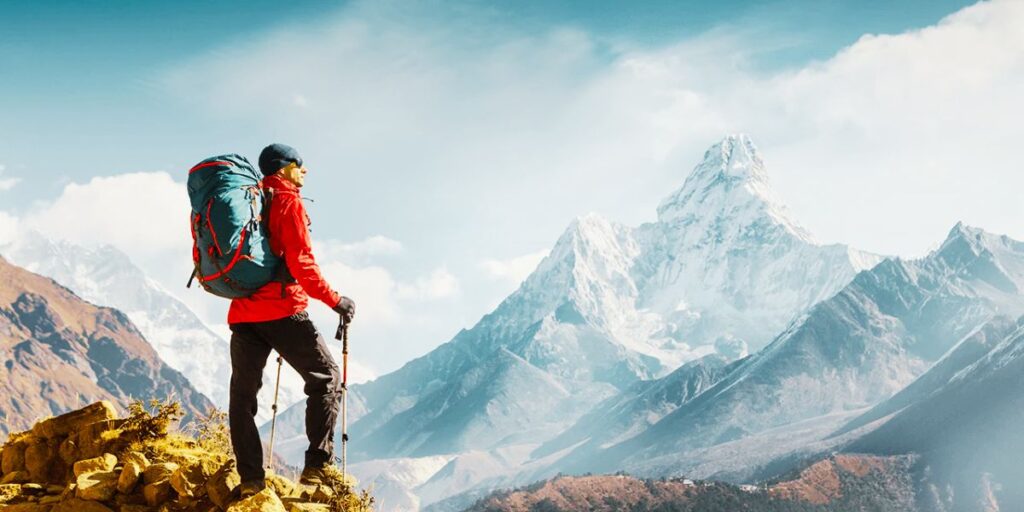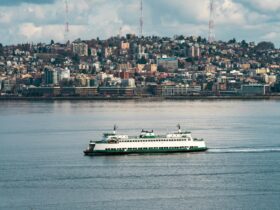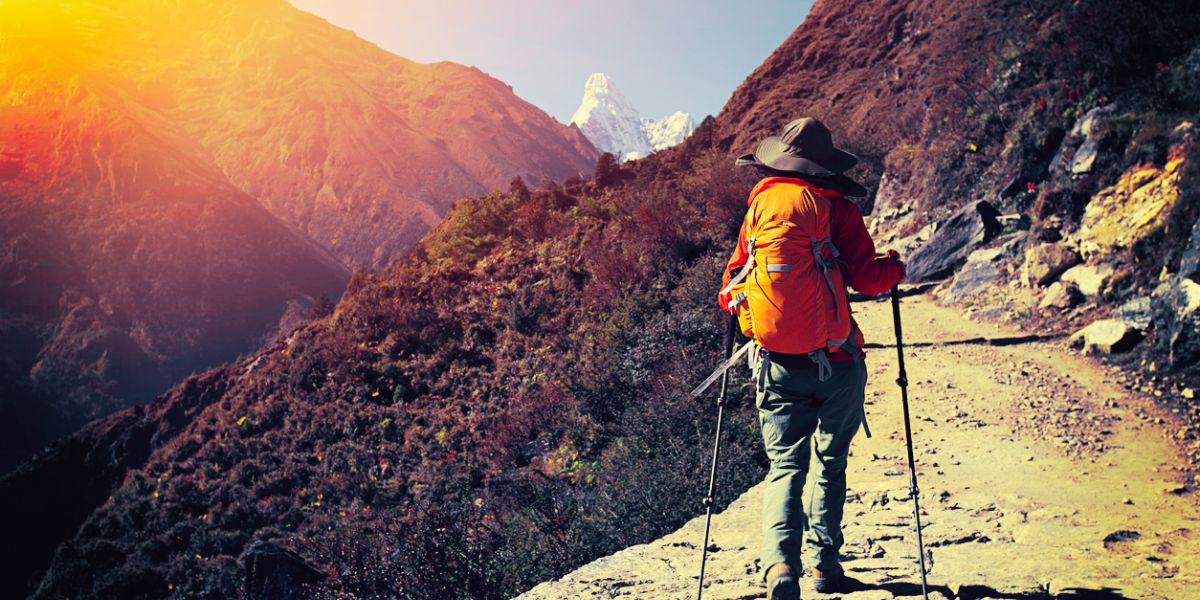Trekking through mountains is an exhilarating experience that provides a deep connection with nature, challenges your physical limits, and offers breathtaking views. However, to fully enjoy this adventurous activity, proper planning is crucial. A well-organized trek ensures not only your safety but also maximizes your experience. Here’s a step-by-step guide to help you plan a successful mountain trekking adventure.
1. Choose the Right Mountain and Trail
Before you embark on your trekking journey, it’s important to choose the right destination. Different mountains offer different levels of difficulty, scenic views, and climates. Some factors to consider while choosing the right mountain include:
a. Difficulty Level
Assess your physical fitness and previous trekking experience. If you are a beginner, choose a moderate to easy trail like the Rocky Mountains or Himalayan foothills, where paths are well-marked and relatively gentle. Experienced trekkers may opt for challenging routes like the Annapurna Circuit in Nepal or the Inca Trail in Peru.
b. Duration of the Trek
Some treks can be completed within a day, while others may take multiple days. Decide on the length of your trekking adventure based on your time availability and stamina. If you are short on time, one-day treks like Mount Monadnock in New Hampshire are ideal. Longer treks, like the Everest Base Camp trek, require a commitment of at least 12 to 14 days.
c. Scenic Appeal
The beauty of the trek is often a key factor in choosing a destination. Some treks offer lush forests, waterfalls, and rivers, while others take you through desolate yet awe-inspiring landscapes like deserts and glaciers. Research various trekking trails, and select one that aligns with the type of scenery you prefer.
d. Accessibility
Consider the proximity of the mountain to airports or train stations, as well as the availability of local transport to the trailhead. Some mountains, such as Mount Kilimanjaro, require flights, local guides, and permits, while others are easier to access.

2. Plan the Right Season
Mountain treks are often heavily influenced by weather conditions. It’s important to pick the right season for your trek, as different mountains have specific weather patterns that can make or break your experience.
a. Ideal Weather Conditions
Look for a season when the weather is relatively stable and conducive for trekking. For example, treks in the Himalayas are ideal during spring (March to May) and autumn (September to November). Monsoon seasons should generally be avoided as heavy rains can cause landslides and difficult terrain conditions.
b. Temperature and Climate
Mountain climates can change quickly, even within a single day. Be prepared for sudden rain, snow, or cold winds, especially at higher altitudes. Check average temperature patterns during your planned dates and pack appropriately.
c. Crowd Considerations
Peak trekking seasons are often crowded, especially on popular trails like the Inca Trail. If you prefer solitude, aim for the shoulder seasons when weather conditions are still favorable but fewer people are on the trail.
3. Get Fit for Trekking
Mountain trekking can be physically demanding, so it’s essential to prepare your body for the challenges ahead. If you don’t train adequately, your adventure may turn into an exhausting ordeal.
a. Cardiovascular Training
Trekking involves prolonged walking, often uphill, with a backpack. Engaging in cardiovascular exercises such as running, cycling, swimming, and hiking in the months leading up to your trip can help improve your stamina. Aim for at least 4 to 5 days of exercise per week.
b. Strength Training
Strong legs and a stable core are essential for a smooth trekking experience. Incorporate exercises such as squats, lunges, and planks into your fitness routine. Additionally, consider practicing with a weighted backpack to simulate the weight you’ll carry during your trek.
c. Acclimatization
If you’re trekking to high altitudes, your body needs time to adjust to the decreased oxygen levels. Gradually increase your altitude over several days, and avoid rushing to high elevations. Spend at least two days at an intermediary altitude before attempting higher elevations to minimize the risk of altitude sickness.
4. Pack the Right Gear
Packing the right equipment can make a significant difference in your comfort and safety. Ensure you have all the essential gear without overpacking, as heavy loads can tire you out quickly.
a. Footwear
Invest in high-quality, waterproof hiking boots with good ankle support. Ensure they are broken in before your trek to avoid blisters. Carry extra pairs of socks to keep your feet dry.
b. Clothing
Layering is key for mountain trekking. Start with moisture-wicking base layers, add insulating mid-layers (fleece or down jackets), and finish with waterproof and windproof outer layers. Include a hat, gloves, and a buff or scarf to protect against wind and cold.
c. Backpack
Choose a sturdy, lightweight backpack with a capacity of 40 to 50 liters for multi-day treks. Ensure it has padded shoulder straps and a waist belt for better weight distribution. Pack only the essentials—tent, sleeping bag, cooking gear, food, water, and navigation tools.

d. Trekking Poles
Trekking poles help with stability, reduce strain on your knees, and can be invaluable, especially on steep ascents or descents. Adjustable trekking poles are the most versatile.
e. Safety and Navigation
Carry a detailed map of the area, a GPS device, or a trekking app that works offline. Ensure you have a compass, headlamp, first-aid kit, water purification tablets, and a multi-tool.
5. Prepare Permits and Budget
Many trekking destinations, especially those in national parks or protected areas, require permits. Ensure you have all the necessary paperwork to avoid any last-minute complications.
a. Permits
Research whether the mountain you plan to trek requires any specific permits. For example, Nepal requires trekkers to have the TIMS card (Trekkers’ Information Management System) and an Annapurna Conservation Area permit for certain routes.
b. Guides and Porters
If you’re new to trekking or attempting a difficult trail, hiring a local guide or porter can enhance your experience and ensure safety. They can navigate the terrain, carry equipment, and provide invaluable knowledge about the area.
c. Budget Considerations
Trekking can be expensive, especially for international destinations. Your budget should cover travel, permits, guide/porter fees, gear, and food. It’s advisable to save a contingency fund for unexpected expenses.
6. Mental Preparation and Safety
Trekking is not just a physical challenge—it requires mental strength as well. Being mentally prepared can help you stay focused and positive during tough stretches.
a. Understand the Challenges
Mountain terrain can be unpredictable. Be prepared for steep climbs, unpredictable weather, and long days of walking. Stay calm during difficult sections and remember that each step brings you closer to the summit.
b. Safety Measures
Always inform someone about your trekking plan, including the estimated start and end dates. Carry a satellite phone or emergency beacon if trekking in remote areas. If you feel any symptoms of altitude sickness—such as headaches, dizziness, or nausea—descend immediately.
c. Leave No Trace
Respect the environment by practicing Leave No Trace principles. Pack out all trash, minimize your impact on the ecosystem, and avoid disturbing wildlife.
Conclusion
Planning a mountain trek takes effort, but the reward of standing on a peak, breathing in the fresh mountain air, and taking in the panoramic views makes it all worthwhile. By choosing the right trail, preparing physically, packing properly, and staying safe, you can enjoy a successful and memorable trekking adventure. So, lace up your boots, pack your gear, and get ready to embark on the journey of a lifetime!
















Leave a Reply